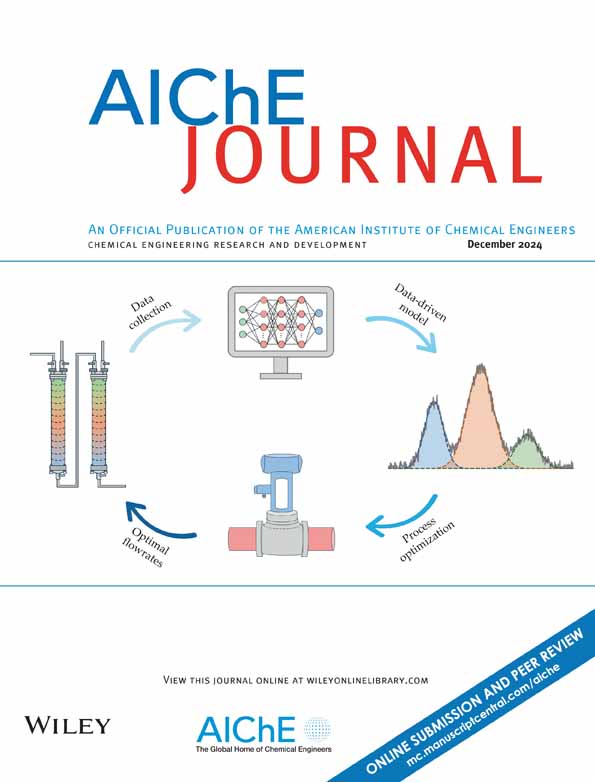直接洞察粒子群动力学及其影响在密集的固体-液体悬浮液使用内联图像方法
IF 4
3区 工程技术
Q2 ENGINEERING, CHEMICAL
引用次数: 0
摘要
非常高相分数(>10%)的浓悬浮液使多相反应器的流体动力学特性显著复杂化。最近提出的内联图像方法提供了观察密集粒子群动力学的可能性,这在以前被认为是不可能完成的任务。在这项工作中,进一步发展了该方法来确定粒子分解流场和群体内粒子的综合数据集。瞬态群体微观结构表现为双重态和多重态两种聚集态,并伴有频繁的碰撞和摩擦。统计分析表明,当固体含率达到13.2%时,颗粒群对滑移速度和净力的阻尼作用显著,颗粒悬浮明显增强。通过对动态数据集的关联分析和相关机理,首次定量阐明了粒子群的粘性效应和阻碍效应。因此,我们提出了预测群效应对轴向滑移速度的相关性,并在较宽的浓度范围内证明了良好的一致性。本文章由计算机程序翻译,如有差异,请以英文原文为准。
Direct insight into particle swarm dynamics and its effects in dense solid–liquid suspensions using inline image method
Concentrated suspensions of very high phase fractions (>10%) significantly complicate hydrodynamic characteristics in multiphase reactors. The inline image method proposed recently provides the possibility to peer into dense particle swarm dynamics, previously considered an impossible mission. In this work, the method was further developed to determine the particle-resolved flow field and comprehensive datasets of particles within a swarm. Transient swarm microstructure demonstrated two aggregation states, that is, doublets and multiplets, accompanied by frequent collisions and friction. Statistical analysis indicated the damping effect on slip velocity and net force induced by the particle swarm became significant as solid holdup reached 13.2%, which markedly enhanced particle suspension. Through correlation analysis of dynamic datasets and relevant mechanisms, the viscous effect and hindrance effect exerted by the particle swarm were quantitatively elucidated for the first time. Accordingly, a correlation was proposed to predict the swarm effect on axial slip velocity, and good agreement was demonstrated across wide concentration ranges.
求助全文
通过发布文献求助,成功后即可免费获取论文全文。
去求助
来源期刊

AIChE Journal
工程技术-工程:化工
CiteScore
7.10
自引率
10.80%
发文量
411
审稿时长
3.6 months
期刊介绍:
The AIChE Journal is the premier research monthly in chemical engineering and related fields. This peer-reviewed and broad-based journal reports on the most important and latest technological advances in core areas of chemical engineering as well as in other relevant engineering disciplines. To keep abreast with the progressive outlook of the profession, the Journal has been expanding the scope of its editorial contents to include such fast developing areas as biotechnology, electrochemical engineering, and environmental engineering.
The AIChE Journal is indeed the global communications vehicle for the world-renowned researchers to exchange top-notch research findings with one another. Subscribing to the AIChE Journal is like having immediate access to nine topical journals in the field.
Articles are categorized according to the following topical areas:
Biomolecular Engineering, Bioengineering, Biochemicals, Biofuels, and Food
Inorganic Materials: Synthesis and Processing
Particle Technology and Fluidization
Process Systems Engineering
Reaction Engineering, Kinetics and Catalysis
Separations: Materials, Devices and Processes
Soft Materials: Synthesis, Processing and Products
Thermodynamics and Molecular-Scale Phenomena
Transport Phenomena and Fluid Mechanics.
 求助内容:
求助内容: 应助结果提醒方式:
应助结果提醒方式:


